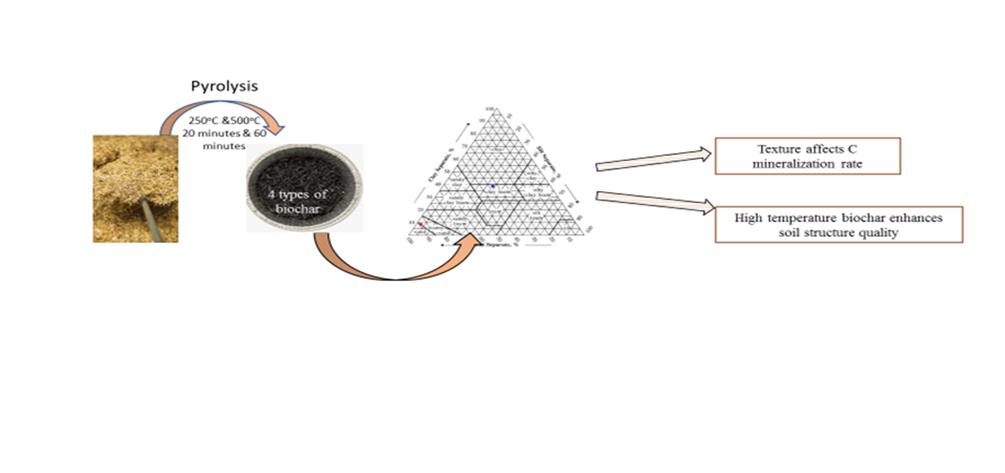
The effectiveness of biochar as a soil conditioner is depended on the feedstock type and pyrolysis conditions as these two factors determine its physical and chemical properties. Wheat straw was heated at two temperatures: a) 2500C and b) 5000C for two time periods: i)20 min and ii) 60 min to produce four types of wheat biochar (WB) (WB250/20, WB250/60, WB500/20 and WB500/60) that were added at two different textured soils, a sandy and a loamy one. We studied C mineralization and changes of the structural quality of the two soils. Incomplete carbonization of WB250 resulted in higher C mineralization in both soils. WB250 decomposed more intensely in the sandy soil while decomposition of WB500 was not affected by soil texture or duration of pyrolysis. Biochar addition reduced the cohesiveness of the loamy soil. WB500 enhanced the formation of smaller aggregates while pyrolysis time had no effect. None of the four types of biochar altered the aggregate size distribution of the no cohesive sandy soil. Biochar with longer pyrolysis time enhanced aggregate stability of both soils because of its higher C contents and EC that promote aggregating mechanisms. WB500/60 resulted in reduced clay dispersion in both soils.
Total file downloads: 7